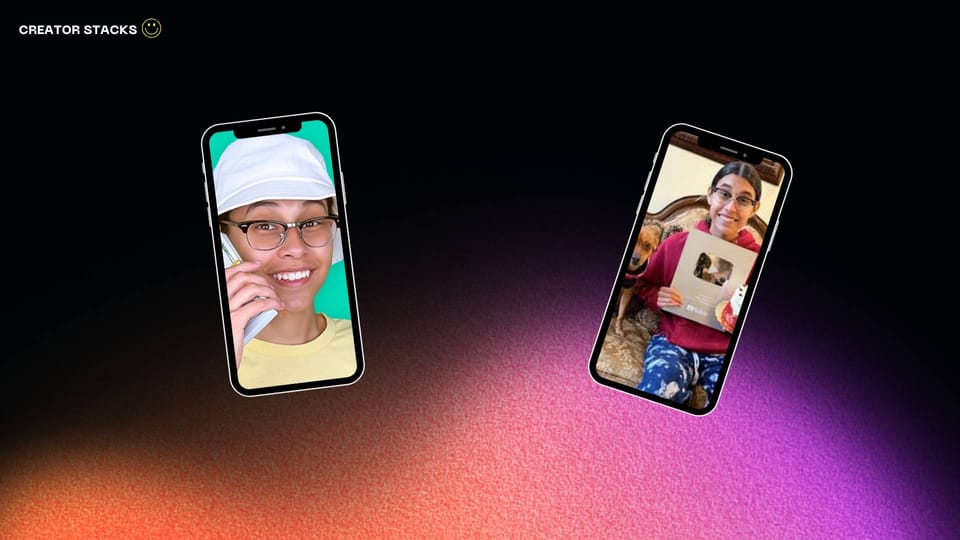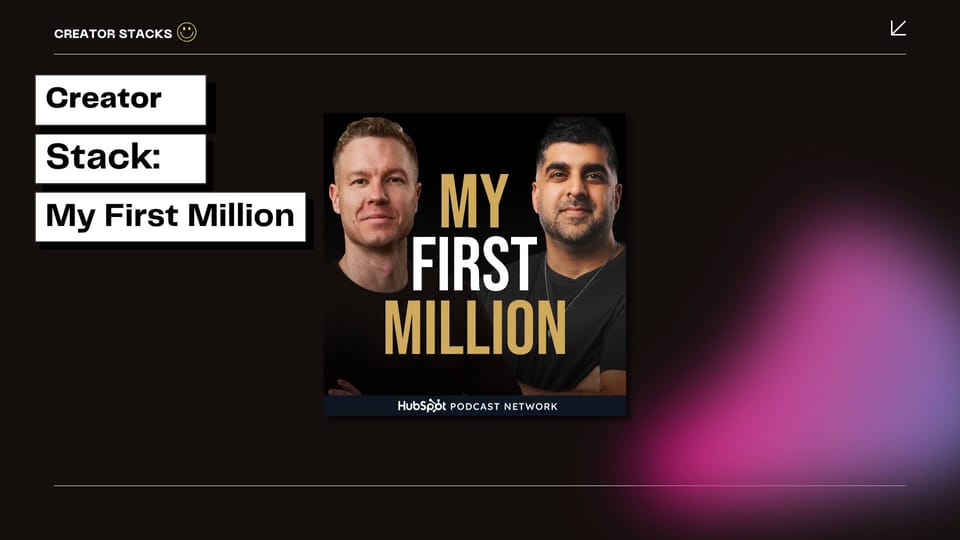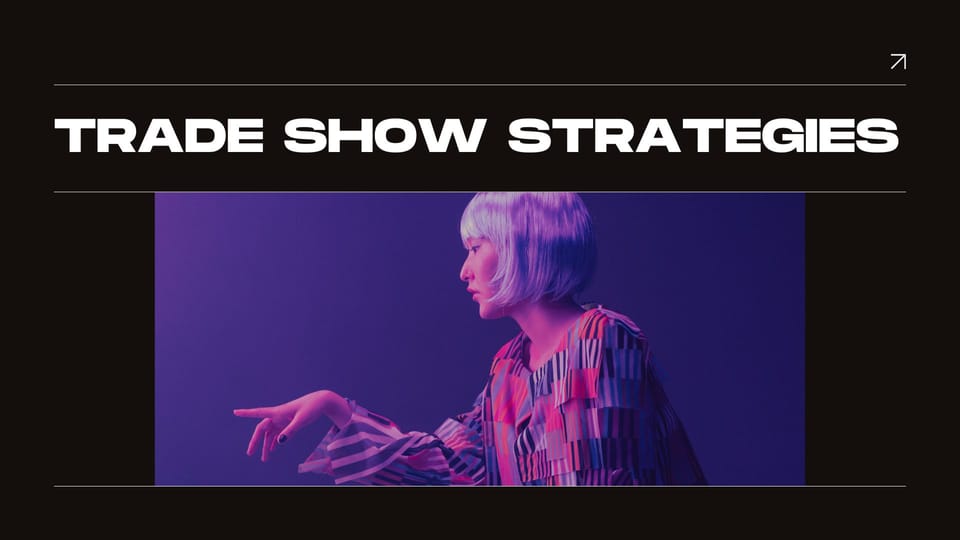How These In-Person Events Are Breaking The Mold

Digital content and marketing is everywhere. I mean, everywhere. Scrolling through your social feeds is like being at a crowded party where everyone's shouting to be heard.
- "Check out my webinar!"
- "Download my eBook!"
- "Hey, watch me lip-sync to a 90s hit!"
It's exhausting.
This is why in-person events can be the breath of fresh air in a world gasping through the smog of digital overload.
Attending an event, shaking hands, and sharing actual laughs with humans IRL creates memories. And not just any memories, but the kind that sticks with you, way longer than that cute cat video you watched five minutes ago or that ad you just scrolled past.
These experiences are memorable because they engage all our senses. You're not just a username or an email address; you're a person interacting with other people in a space designed to create moments. Plus you get a ton of content to upload later.
According to SPLASH 73% of marketers plan on increasing event budgets in 2024:
it certainly pays to create memorable, consistent buying experiences for customers in order to strengthen brand identity and stand out from competitors. - SPLASH
We also have to be honest - many events are boring.
So, how do we combat the need for in-person connection, while also keeping guests engaged.
In this post we'll look at 3 types of events that are doing things a bit differently:
Tools like River allow creators a chance to turn content viewers into in-person communities:

Camp MFM:
If you follow entrepreneurship content, the My First Million podcast is probably no stranger to your lineup of content to consume. Frustrated with conventional conferences and networking events, Shaan Purri and Sam Parr created Camp MFM.
Nobody wants to just sit at a conference or a lecture hall and just sit there and listen to speakers its kind of boring - Shaan Puri
The idea started with Shaan wanting to organize a basketball weekend for entrepreneurs. It all started with no formal website, invites, and very loose details.

By hosting a weekend event that featured entrepreneurs and creators such as Mr. Beast, Al Doan, Hasan Minaj, along with several podcast guests, where they engaged in basketball poker, games, and vibes.
Some key takeaways from Camp MFM's event:
1. Don't sweat the small stuff - Shaan started this with no formal invites, no website, and no detailed plan. Just text messages asking people if they would be down. Too often creators of events like this focus on details that don't matter to the experience
2. Immersion - Unlike traditional events where engagements can remain superficial, Camp MFM’s setup encouraged—and almost enforced—genuine connections. Sharing living spaces, meals, and activities is bound to create genuine connections
3. Starting a trend - Shaan calls them an "active conference". Other creators took note of Camp MFM and are starting to create their own versions of Camp MFM:
- Danny Miranda - Godspeed Running Club
- Patt Walls - MRR Open
The Program:
Strauss Zelnick wanted to prioritize fitness, but as CEO of Take-two Interactive and co-founder of private equity company Zelnick Media Capital people were constantly vying for his time.
To solve his problem he set up "The Program".

A fitness group that meets 4 times a week at 6 a.m. to go through a regimented program.
Strauss Zelnick's approach to combining fitness with networking offers a refreshing deviation from meetings, conferences, and networking events.
Here are key takeaways from Zelnick's workout club that can inspire both entrepreneurs and organizations looking to foster community and connection in different ways:
1. Integration of Fitness into Professional Life - Zelnick treats fitness with the same priority as a meeting or personal time, illustrating the importance of health in achieving professional success. By inviting colleagues and acquaintances to join his workouts instead of canceling them for work commitments, he seamlessly integrates his fitness regime into his professional life.
2. Creating a Community of Like-minded Individuals - The workout club is a gathering of individuals across a wide spectrum of ages and fitness levels, united by their interest in maintaining their health and fitness.
3. Accessibility and Inclusivity - It's free. Recognizing that early-career individuals might not afford certain fitness programs, Zelnick ensures that money is not a barrier to participation. This decision not only broadens the program's reach but also strengthens its community by including members from various economic backgrounds, enhancing the diversity of experiences and perspectives.
4. Organic Growth and Self-selection -Membership in the program grows through word-of-mouth or personal invitations, allowing it to attract individuals who align with its ethos organically.
Ex: The group meets at 6 am if your not willing to do that then that means it's not for you.
This self-selecting process ensures that the community remains cohesive and committed, with members who are genuinely interested in both the fitness aspect and the opportunity to connect with others in meaningful ways.
Surf and Sales:
If you have been to industry conferences, you know the drill. You show up, walk around the conference floor, get pitched, get swag, go out to dinner, and then head home until the next one.
Connections are kinda flakey and most people are there because they have to be.
Scott Leese and Richard Harris noticed this and decided to create something completely different. Instead of targeting mass amounts of people and shoving them into a conference center, they took small groups of like-minded people to the beach to learn, connect, and surf.
They called it The Surf & Sales Summit.
They even drive this differentiator home on their website. Where will you find a better connection:

Here are some key takeaways from the Surf and Sales concept:
1. Innovative Learning Environment - Surf and Sales breaks away from the typical conference room setting, taking participants to picturesque locations such as Costa Rica where waves and sales strategies are equally discussed. This helps fosters a more relaxed and open atmosphere for learning, encouraging participants to step out of their comfort zones not only physically but also intellectually.
2. Personalized Attention and Tailored Content - As a micro-conference, Surf and Sales offers a more intimate setting with significantly fewer attendees compared to traditional conferences. This allows for personalized attention and tailored content that addresses each participant's specific needs and challenges.
Ex: If it's mostly AE's, the content will be more focused on career growth than if it's company founders.
The smaller group size promotes in-depth discussions, hands-on sessions, and a customized learning experience that larger conferences often cannot provide.
3. Combining Physical Activity with Professional Development - The inclusion of surfing as a core activity alongside sales workshops underscores the importance of balance between physical well-being and professional excellence. Surfing challenges individuals to embrace uncertainty, practice resilience, and cultivate mindfulness—qualities that are equally valuable in sales.
Surf and Sales shows how unconventional methods can lead to learning experiences and professional development.
Future Events:
Steph Smith, the host of a16z podcast and overall internet detective, recently created Internet Pipes. After creating her product she also launched a community for fans. As she describes it:
A community calendar featuring select AMAs with the builders behind these tools and a few IRL events in key cities.
She recently tweeted this as a result of launching the idea of IRL meetups.

To see the full tweet click here.
Jay Clouse, founder of Creator Science, also sent an email to his list titled "Why I'm Investing in IRL events."
Summary
One thing all these events do is take something physical (working out, surfing, basketball, etc) and create a community around it. The activity is just the thing to do, the real magic is in joined experience.
One of the hardest parts of networking is finding common ground with people you just met. By focusing on an activity it instantly gives people a shared experience and something to interact on.
While the blueprint of all these events may not be one-size-fits-all, its core principles—a focus on genuine connection, fostering curiosity, and creating an immersive experience—can inspire any event, tailored to the unique needs and dynamics of different groups.
These events reimagine professional gatherings as personal, immersive experiences that leave participants inspired, connected, and eager for the next adventure.




